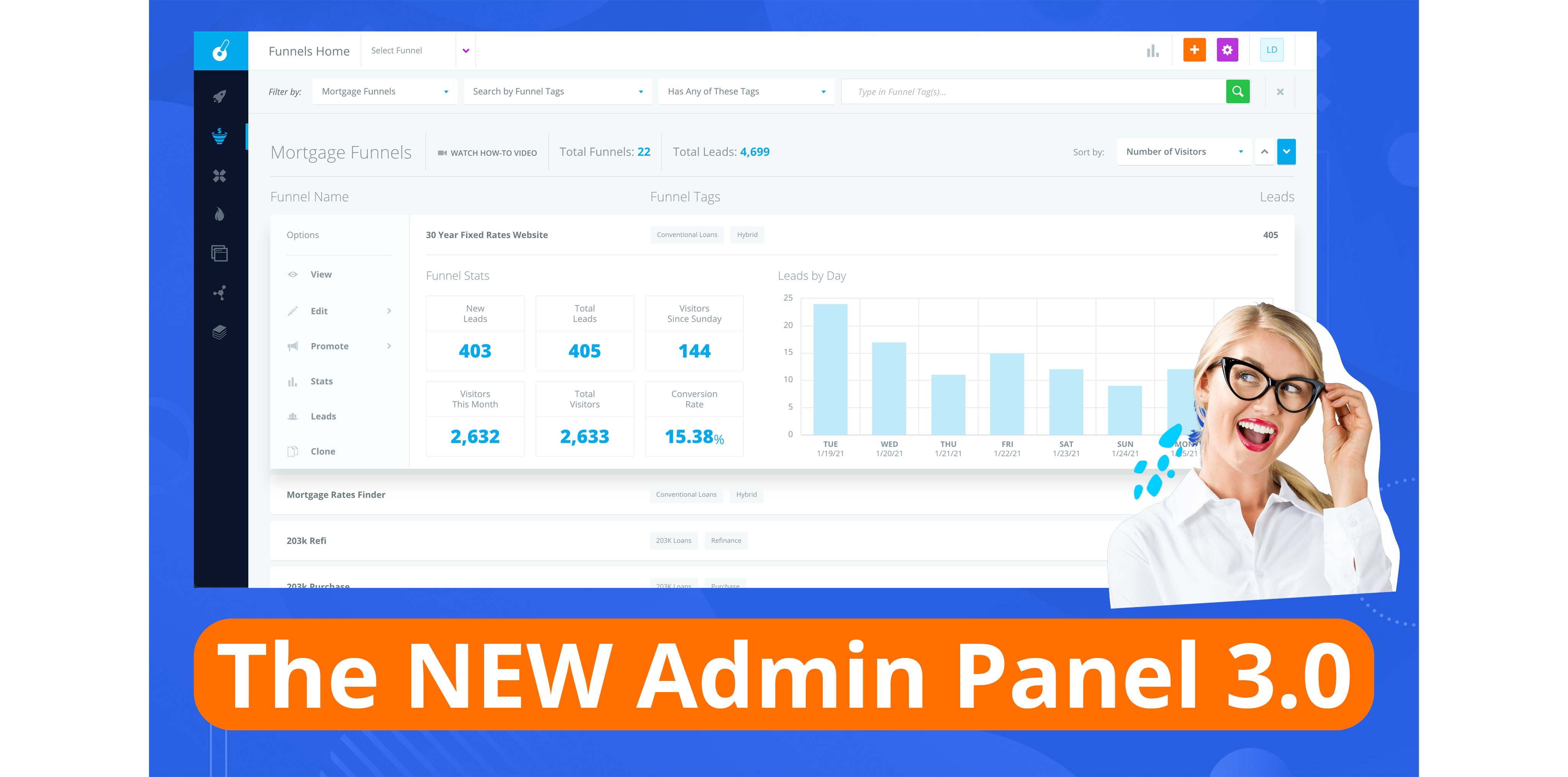You think you’ve done it all right.
Messaging, landing pages, calls-to-action, a simplified site—you’ve got it all down.
As a mortgage marketer, you’ve taken the time to think about what your site must look like from the potential client’s eyes—and you’ve incorporated the changes necessary to make your site so appealing.
So what’s going wrong?
The conversions aren’t there. Or maybe the traffic isn’t there.
Whatever it is, you feel like you’ve put a heck of a lot of effort into your new site, only for the results not to show up.
It’s like if you went to the gym for six months and didn’t notice one change.
If you find yourself in this predicament, the hardest thing can be discovering exactly what it is that’s going wrong with your site.
That’s why I’ve put together a helpful list of tips and strategies for diagnosing the reason your site isn’t driving the engagement to your mortgage business like it should:
Whatever Your Problem, Make it Measurable
One of the reasons some people don’t notice progress is that they don’t know how to track it in the first place.
For example, let’s say you did get plenty of leads from your website. If you don’t actively measure these leads, however, you would have no idea whether or not your web presence is really boosting your bottom line.
There’s an old saying in business—that which gets measured also gets managed. Just as someone who is trying to lose weight will routinely weigh themselves to measure their progress, it’s the act of measuring that sometimes impacts the actions you take along the way.
If you’re not sure what your problem is, there’s a good chance you aren’t even measuring them in the first place.
But that leads to a new point: what should you measure, anyway?
There are plenty of options here. Here are some of the most common problems when it comes to measuring your website’s success:
- Total traffic. If you don’t have enough eyeballs on your site in the first place, then none of the other measurements are going to matter. Measuring total traffic is a great way to find out if you need to boost your content efforts, your social media, or simply even buy a few ads to stimulate how many people are coming to your site.
- Conversion rate. The rate at which people visit your site and actually click through to some intended action—like filling out your quote form or signing up for your newsletter—is important. It may be one of the most important numbers in your entire measurement of your website’s success, which is why it’s so critical that you understand it. It’s possible to do the math yourself, but even using a basic version of Google Analytics will allow you to understand the conversion rate on your website—and then do something about it.
- Bounce rate. The rate at which people leave your site can be telling. For example, if someone visits your site and then clicks away in ten seconds, what does that tell you? That there’s nothing in it for them. They don’t have the impetus to keep clicking through your site because there’s something else they’d rather be doing. That’s why it’s so important to incorporate some element on your site that serves your potential client, whether it be a mortgage calculator or even a free download that serves as a guide to mortgages.
These are just three options you have when measuring your site, but remember: without measuring first, you won’t know what needs management on your site.
Finding a Way Forward
It may take a while for you to set up measurements on your site if you don’t have them already—but once you do, the insights will be worth it.
There are some keys to remember, however, as you try to find your way forward:
- Sample size. You need a strong sample size to get an idea of what’s really working with your web presence. That means you can’t look at your traffic for a day and draw any conclusions. That single day may be an aberration—you won’t really know until you get a sense of the patterns on your site.
- Getting more traffic. If you don’t have a lot of traffic most days, then you won’t find a large enough sample size, either. It will take a long time to wait for it. It’s okay if you don’t have enough traffic for now, but if you don’t have enough traffic to measure your site—it’s possible you identified your problem already.
The next thing to do? Look for weak points.
Where on your web presence are you losing the most potential clients. For example, does one landing page have a significantly higher bounce rate than most?
These weak points can be difficult to find, but give it a good study session. Really poke around on your site to find what might be going wrong.
It might not be obvious at first.
But if you’re expecting a “first glance” to solve all your problems, then you’re going to be sorely disappointed.
Start Testing, Testing, Testing
What if you’re plum out of ideas as to what to do to improve your site?
Simple: treat everything like a test.
A/B testing is one of the most powerful ways to gain insights about the success of your website. It will point to which landing pages are giving you the most conversions—and which are not.
It will help identify which types of content you should publish—and which you should phase out.
Even if you have no way forward, testing a new idea is a great way to get out of your comfort zone and try something new.
What’s better, running an A/B test will deliver tangible results that you can study. Upon review, you should have new insights that will tell you a little more about your audience.
That’s not just a way forward—it’s a way to continually improve your web presence, whether you have problems or not.
What are the best items on your website to test?
- Headlines. Headlines can have a dramatic impact on how your potential clients view the rest of your content, as they’re typically the first items on your site that your customers will scan through.
- Calls-to-action. Changing a button’s color, text, placement, etc.—you’d be surprised at how many variables there are. But it’s not difficult to test out your CTAs, and once you know which perform the best for you, you’ll be able to leave it alone.
- Site layout. Experimenting with new layout schemes can be a great way to check on your site’s overall health. You may even be able to simplify your site by incorporating the changes, which can reduce the time it takes to load. This in turn has a positive effect on your bounce rate.
No matter what the issue is with your site, there’s one key everyone needs to keep in mind:
Don’t give up.
I recommend checking out a free trial of leadPops to help boost your website’s success, even if you think you have it all handled.








